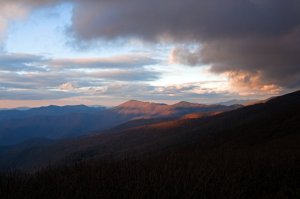
Burgess Falls, Burgess Falls State Park, Tennessee. May 26, 2001.
(Note: All pictures may be enlarged by clicking on them once or twice.)
As most of you know, I’m a big fan of Apple products. My first personal computer was an AppleII. I’ve worked with Macintosh computers from just about the time they were introduced, and am now on my fourth iMac computer.
I also have a couple of iPods and an iPad. I really do like Apple products.

Cumberland Falls, Cumberland Falls State Park, Kentucky. June 23, 2005.
There is one area, however, in which I’m fed up with Apple, and that is their online hosting services. Apple first offered online hosting of photos and files with Home Page, and I uploaded many pictures to Home Page to share them with family and friends.

Elk River Falls, Elk Park, North Carolina. February 15, 2008.
After a couple of years Home Page went away with its place taken by Mobile Me. Fortunately Apple provided an easy way to move to Mobile Me, and that’s what I did. Over the past five years I’ve uploaded many more photos to Mobile Me. I really liked that service.

Looking Glass Falls, Pisgah National Forest, North Carolina. May 23, 2002
Mobile Me went away on June 30, and there is nothing from Apple to replace it. Fortunately Apple did provide plenty of advance notice, but that was about all. So I decided to create my own site completely independent of anything Apple does. For the past few months I’ve been working to set up the site and move pictures and files to it.

Lower Whitewater Falls, Sapphire, North Carolina. November 9, 2006.
I’ve finished moving our waterfall collection. It currently contains the 452 waterfalls that I’ve cataloged to date. I’ll add more waterfalls as I get my pictures organized. If you would like to visit our waterfall collection, you can do so HERE.

North River Falls, Tellico Plains, Tennessee. June 18, 2010.
I’m in the process of moving other pictures and files to my site, and I’ll let you know as they are posted.
36.000347
-84.886340
























